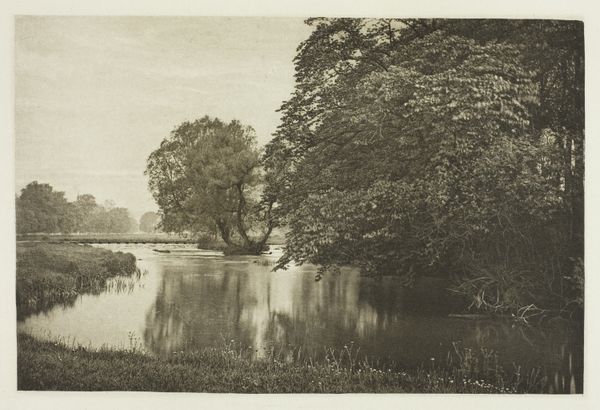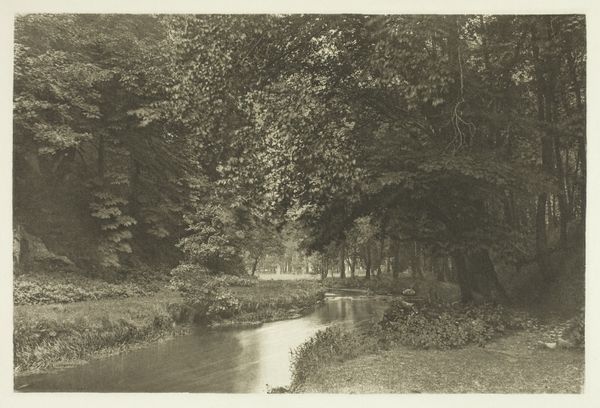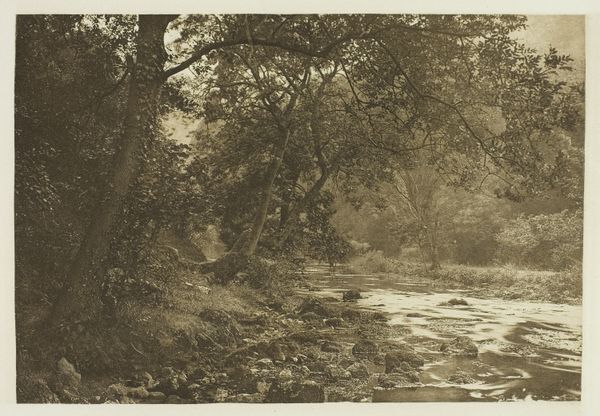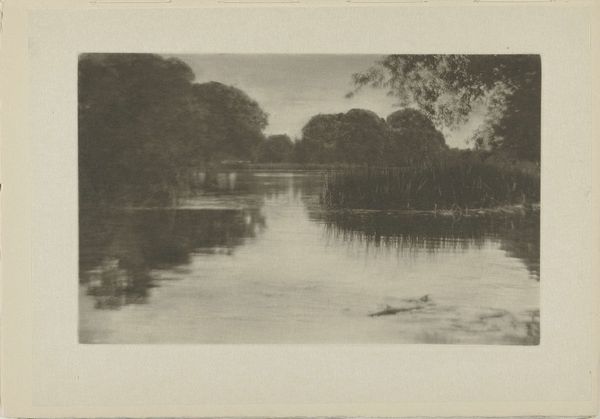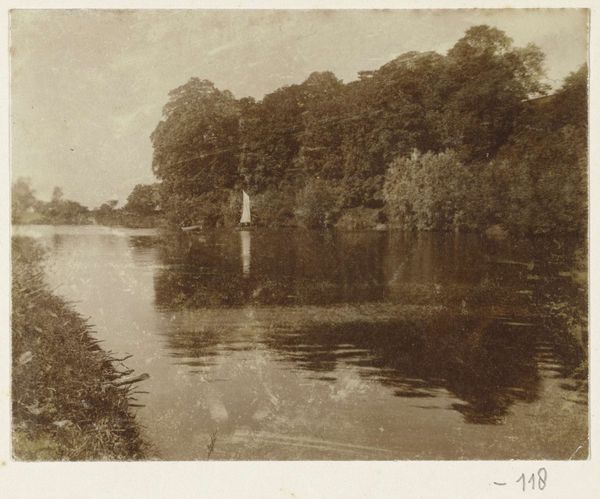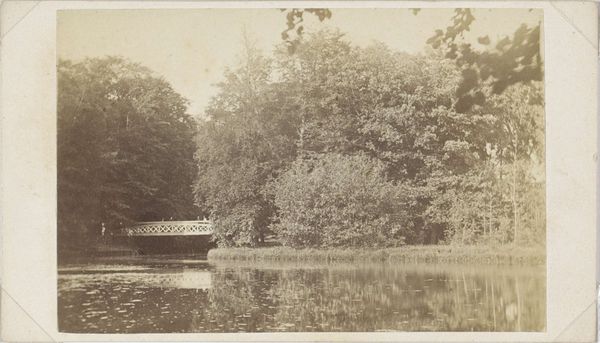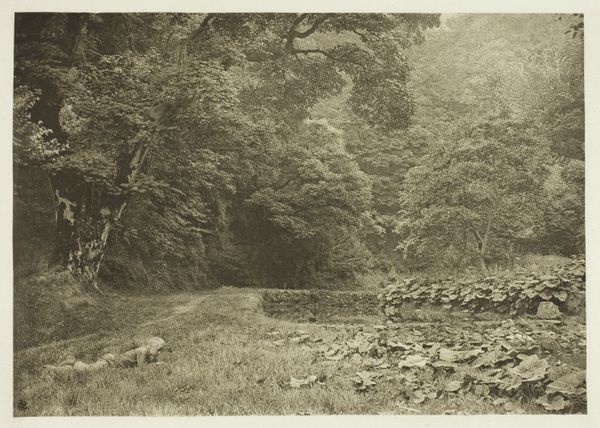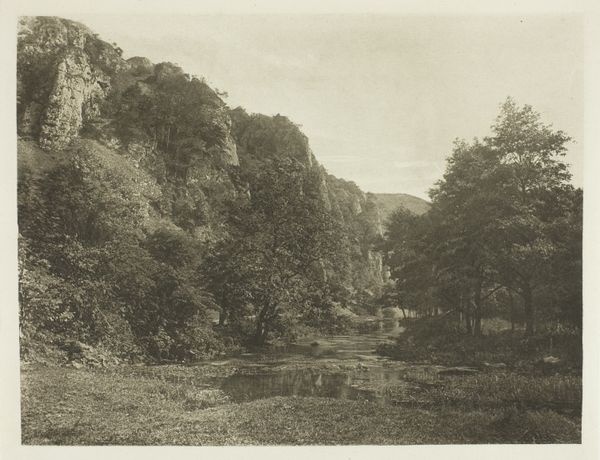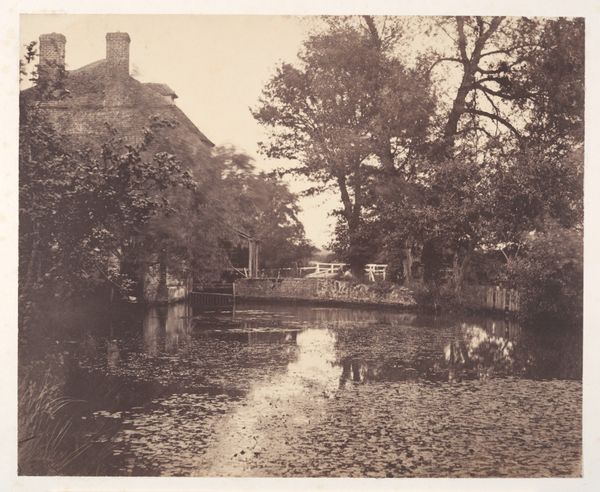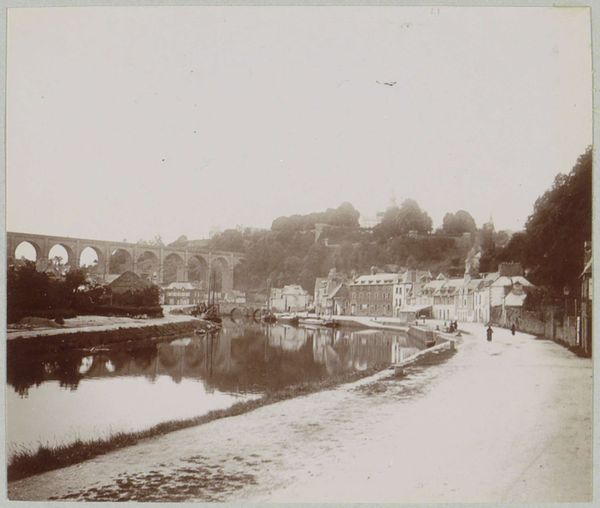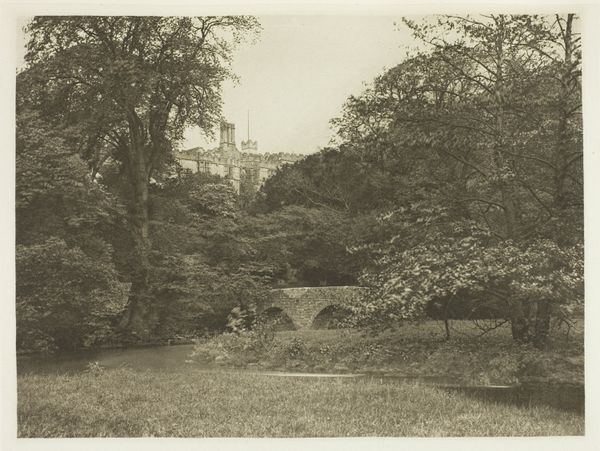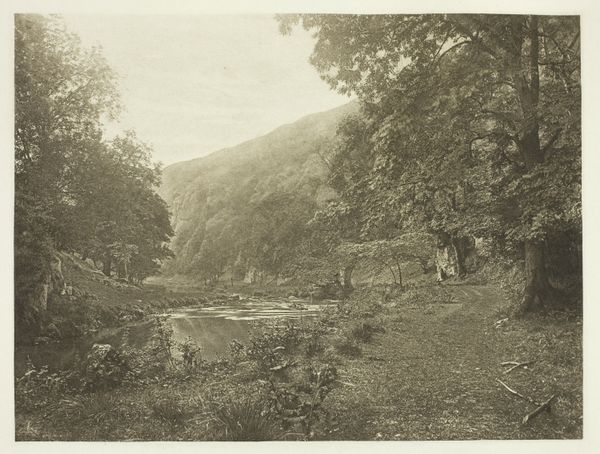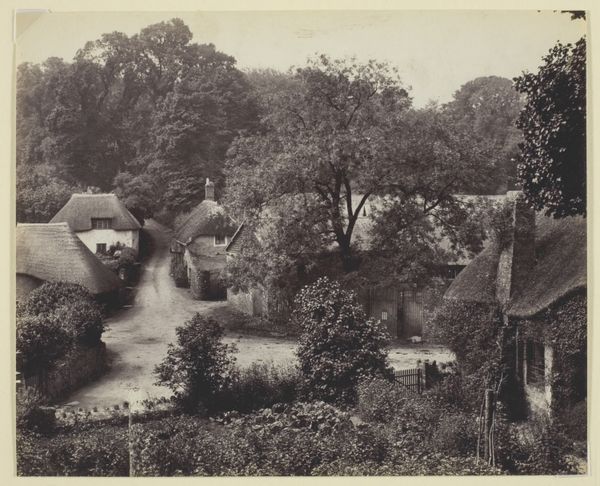
Dimensions: 13.4 × 20.1 cm (image); 16 × 22.2 cm (paper); 25 × 31.7 cm (album page)
Copyright: Public Domain
Peter Henry Emerson made this photograph, Rowsley Bridge, on the Derwent, using the photogravure process. This involved etching a copper plate and using it to make a print, a process that combines mechanical reproduction with the hand-crafted values of printmaking. Emerson was part of the movement to establish photography as a fine art, and he often chose rural subjects, such as the Rowsley Bridge, on the Derwent. The photogravure medium, with its tonal depth, brings out the scene's picturesque qualities; the water, bridge, and foliage. What’s interesting here is that photography, from its inception, had an ambiguous status: was it art or industry? The photogravure process, used by Emerson, deliberately slows down the process of image-making. It also imbues it with the authority of etching. In this way, Emerson elevated the status of photography as a medium. By considering these issues of materiality, process, and social context, we can fully appreciate the depth and significance of this work.
Comments
No comments
Be the first to comment and join the conversation on the ultimate creative platform.
